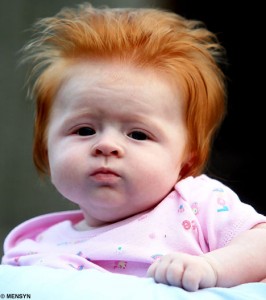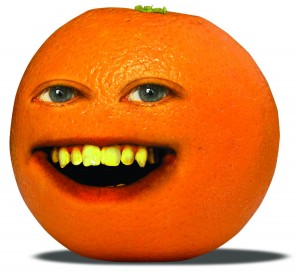A Brief History of Orange
/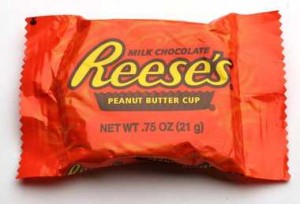 Here's the story of a fun adventure we've had at Central High School over the last couple of days. I'm a huge fan of both podcasts and discussions about language, so Slate's language podcast, Lexicon Valley, is like my chocolate and peanut butter meeting in a Reece's Cup. The most recent episode (#43), asked and answered the question, "Which did the word 'orange' refer to first, the color or the fruit?" I was so excited about this that I not only polled my own students to see what their guess would be, but asked my colleagues in the English department to poll their students, too. (Thanks to Mike Voulo for the idea of polling people to find out their guesses, and thanks to lexicographer Ben Zimmer for the wonderful answer to the question itself!)
Here's the story of a fun adventure we've had at Central High School over the last couple of days. I'm a huge fan of both podcasts and discussions about language, so Slate's language podcast, Lexicon Valley, is like my chocolate and peanut butter meeting in a Reece's Cup. The most recent episode (#43), asked and answered the question, "Which did the word 'orange' refer to first, the color or the fruit?" I was so excited about this that I not only polled my own students to see what their guess would be, but asked my colleagues in the English department to poll their students, too. (Thanks to Mike Voulo for the idea of polling people to find out their guesses, and thanks to lexicographer Ben Zimmer for the wonderful answer to the question itself!)
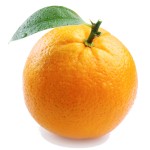 At present, with some ballots still uncounted, our count is 175 votes for the color coming first, and 286 for the fruit coming first. Drumroll… The short answer is that the word has evolved from a word naming the fruit, not the color. The story is a lot more fascinating than that, though, and it gives us some insight into the origin of our language and the ways languages work in general.
At present, with some ballots still uncounted, our count is 175 votes for the color coming first, and 286 for the fruit coming first. Drumroll… The short answer is that the word has evolved from a word naming the fruit, not the color. The story is a lot more fascinating than that, though, and it gives us some insight into the origin of our language and the ways languages work in general.
First of all, it turns out that there is an evolution in every language when it comes to naming colors. Cultures start out with words for dark and light. Then they add red. Next come blue and green. Colors like purple and orange come much later. The tribes in England who formed the basis for our language, the Angles, Saxons, and Jutes, had no word for the color orange. If they wanted to describe something that was orange, they called it red-yellow. If you’ve ever wondered why we call people who have orange hair “redheads,” this makes total sense. They couldn’t call them “orangeheads.” They had no word for orange.
Meanwhile, long before the Angles ever came to England, in ancient China, in about 2500 B.C., they had this fruit that was orange. We have no idea what they called it, but by the time it made it down to India, we have record of its name in Sanskrit in an Indian medical book from around 2000 B.C., and they called it “naranga.” The word “naru” means “fragrant” in some other languages from the Indian subcontinent, so we guess it meant “fragrant fruit.”
From India, the word moved to Persia, and in Persian it became “nārang.” From there, it went to Arabic and became “nāranj.”
Muslim merchants introduced it to various European languages, and it became “naranja” in Spanish, “narancia” in Italian, “nerantzion” in Byzantine Greek.
Then, some of those European countries started dropping the first consonant. The Italian “narancio” became “arancio.” Late Latin got “aurantium.” (Slight digression: This happens in languages when the article, like “a” or “an” gets mixed up with the word. For example, in English, the word “adder” used to be “nadder,” but people describing “a nadder” eventually switched it to “an adder.” Conversely, our word “newt” used to be “ewt,” but “an ewt” became “a newt.” Thanks again, Mr. Zimmer!)
Now here’s where the story of our English word gets really weird and cool! In the south of France, in the Provence region, they spoke a dialect of a language called Occitan. It’s not French. Actually, it’s closest relative is the Catalan language spoken in Catalonia, a part of modern Spain. Anyway, in that Provance region, there was an old Roman city named after a Celtic god, Aracio, a god of water. Over time, the name of the town changed so that, in the Provençal language, it was Aurenja. The Provençal word for the fruit, by then, had evolved into auranja. Over time, they blend, until people there are calling both the city and the fruit Orenge. Eventually, this becomes “orange.”
But wait! How did this word get to English? Well, the prince of this city, a dude named Prince Philebert of Orange, was given control of a good chunk of The Netherlands because he helped out the Emperor Charles V of the Holy Roman Empire. But he had no heir, so his title passed to his German nephew, William of Nassau. William then founded the House of Orange that became the ruling family of the newly independent Netherlands. He started The 80 Years War with Spain. His grandson Charles become a king of England. How? Well, the English decided that they were worried about their new Catholic king, James II, so they deposed him in the Revolution of 1688, then reached out to a prince from the nearby Protestant royal family so they could have a new Protestant king. "Oh look! There's a Protestant royal family right over there, across the English channel in The Netherlands. It's the House of Orange!" When Charles arrived, the English greeted him with orange banners and, of course, oranges. Charles then encouraged Protestants to settle in Ireland, so the Protestants 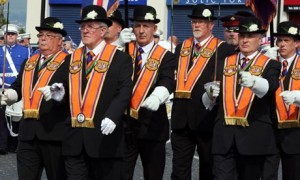 there come to be known as the Orangemen. The color orange not only came to be part of English, but it took on important symbolism for Protestants in the British Isles. I'll bet the folks waving those orange banners for Charles III had no idea that his family's color came from a town far from The Netherlands, in the south of France, which acquired its name, ultimately, because of a completely random coincidence involving the similar names of a Celtic god and a Chinese fruit!
there come to be known as the Orangemen. The color orange not only came to be part of English, but it took on important symbolism for Protestants in the British Isles. I'll bet the folks waving those orange banners for Charles III had no idea that his family's color came from a town far from The Netherlands, in the south of France, which acquired its name, ultimately, because of a completely random coincidence involving the similar names of a Celtic god and a Chinese fruit!
English is the most bizarre, wacky, fascinating language ever, and I’m so glad I get to teach it!
(Again, I owe credit for this whole story to Ben Zimmer who wrote it here and told it here.)


